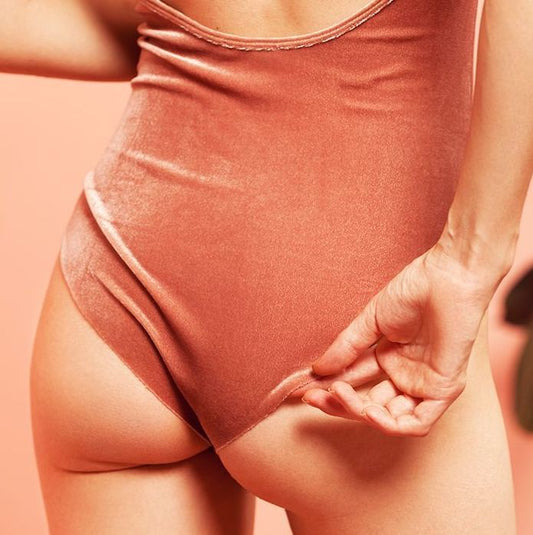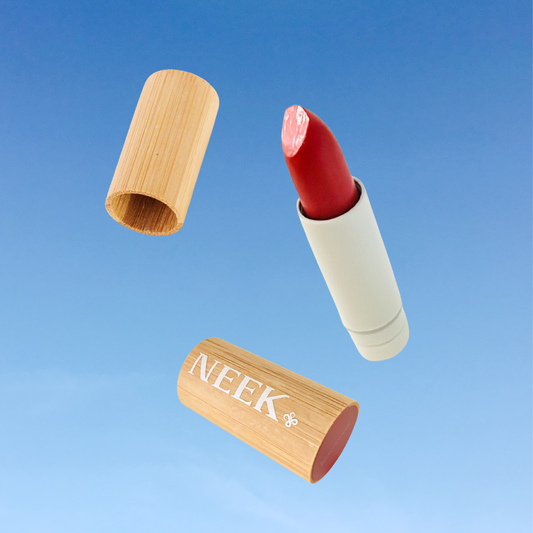There are few things more difficult than successfully getting a teenager to leave their warm, snuggly bed to face another beautiful day of a morning. Let alone when they are greeted with a big zit when they look in the mirror.
 The info and tips we'll be sharing over the next few weeks is aimed at helping teens (or anyone that suffers from breakouts or skin irritation) in achieving these skin goals.
The info and tips we'll be sharing over the next few weeks is aimed at helping teens (or anyone that suffers from breakouts or skin irritation) in achieving these skin goals.
SKIN GOALS
- skin that is clear of redness and blemishes
- oil balance so that skin remains hydrated
- clear skin that has a healthy glow
We also want to help you get familiar with skincare ingredients - the good, the bad and the ugly so you can make good choices and have happy, healthy skin.
What's the most important skincare product for teens?
C L E A N S E R.
Why? For teens it’s about controlling oiliness. Pimples develop when sebaceous glands (or oil glands – soz, I really love saying si-bay-shous) become clogged and infected, leading to swollen, red lesions filled with pus. YUM! So, if we can control the oil and prevent bacteria, we can minimise breakouts.
Preventing bacteria... Just like washing hands reduces the spread of COVID-19, good skin hygiene reduces pimples from populating. This is why Cleanser is the boss.
The skin on our faces isn’t as robust as our hands, so although not ideal for any skin, hands can better tolerate the harsh detergents you find in most hand soaps. So, choosing the right cleanser for your face is everything.
The trick is finding a cleanser that properly cleans your face, removing bacteria but doesn’t break through the skin barrier. Damaging the skin’s barrier makes it vulnerable to allergies, irritation and infection. A common culprit of causing damage is the harsh or toxic ingredients contained in most cleansers.
 How to choose a good cleanser.
How to choose a good cleanser.
Every time you use a healthy cleanser, your skin should feel smooth and soft. An effective cleanser should also gently remove makeup without stripping your skin of its natural goodness. (NEEK’s cleanser uses Aloe Vera and Calendula to rebalance dryness and calm delicate skin.)
Fake News
- A tight face after cleansing means it’s clean. Nope, it’s usually a sign that the skin has been stripped of its natural oil and protection.
- Expensive/ price doesn’t mean the best. Read the ingredients on the back not the claims on the front. A common reason that companies use synthetic ingredients instead of natural is down to price. Natural ingredients are far better quality but synthetic are better for the bottom line.
- Natural ingredients aren’t as effective? False! Some of the hardest-working, scientifically proven ingredients in beauty products are natural.
 Ingredients to ‘ghost’
Ingredients to ‘ghost’
Avoid ingredients that are known to irritate skin or that may have adverse effects when used long term. Cleanser and washes commonly found in supermarkets contain SLS and harsh detergents, which can make acne worse.
However, when they are disguised with their fancy names in ingredients lists on the back label, they are harder to identify.
Below are the common 'free from' chemicals that most of us are familiar with.
Silicones (make products smooth and slippery), Parabens (prevent bacteria), Sulfates SLS or SLES (used for creating foam and bubbles), Petrolatum and mineral oils (give an oily moisturizing feel), PEGS propylene glycol (help ingredients mix together), fragrance/parfum (manufactured scent).
However, when these are disguised using with their fancy names in ingredients lists on the back label, they are hard to identify.
Here's a list of some common ingredients you'll find in many cleansers marketed to teens. These ingredients are either toxic or know to damage skin or cause skin conditions like dermatitis.
- Sodium Lauryl sulphate, Sodium Lauroyl Sarcosinate = SLS (prohibited in Japan)
- Phenoxyethanol = Paraben
- Methylpropanediol = Perfume
- Disodium Laureth Sulfosuccinate = surfactant derived from petroleum
- Polysorbate 20 = Surfactant derived from petroleum
- Ceteareth-60 = Surfactant derived from petroleum/animal/palm oil
- Benzoic Acid = Paraben/preservative
- Disodium EDTA = Enhancer derived from petroleum
- Sodium Benzoate = Paraben/preservative
- Disodium Laureth Sulfosuccinate = surfactant derived from petroleum/palm oil
- Cocamidopropyl Betaine = Surfactant synthetic
- Sodium Hydroxide = Buffering/pH stability
If you're still awake ;) and would like to learn more about identifying ingredients, send us an email and we'll send you more information.
 Natural anti-acne ingredients that are ‘bussin’
Natural anti-acne ingredients that are ‘bussin’
Scan the ingredient list on the back of your cleanser for this natural acne busters, glowy-skin getters.
-
Acne, antibacterial and inflammation:
Equisetum arvense (Horsetail), Rosmarinus officinalis (Rosemary) Leaf.
-
Soothing:
Aloe barbadensis (Aloe Vera) Leaf juice, Calendula officinalis (Calendula) Flower.
-
Pore refining:
Acacia Victoriae (Wattleseed) Fruit Extract.
-
Controlling oil/skin toning:
Squalane (olive derived), (Sage) Salvia Officinalis.
We talked about the importance of cleansing for teens and provided some tips on choosing an effective cleanser - that has their short term and long term skin needs covered.
Next week: Getting the most out of your cleanser + some amazing skin 'smarts' that everyone will find helpful. Click on this link to subscribe and have it delivered directly to your inbox.
Please also following us on Instagram for extra info and inspiration.
Any questions or topics you’d like us to cover, please email us.
Thank you for reading and supporting NEEK.
GTG POS 😝




